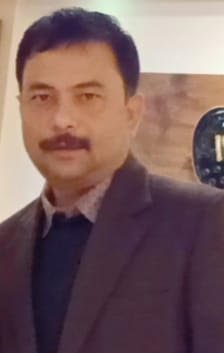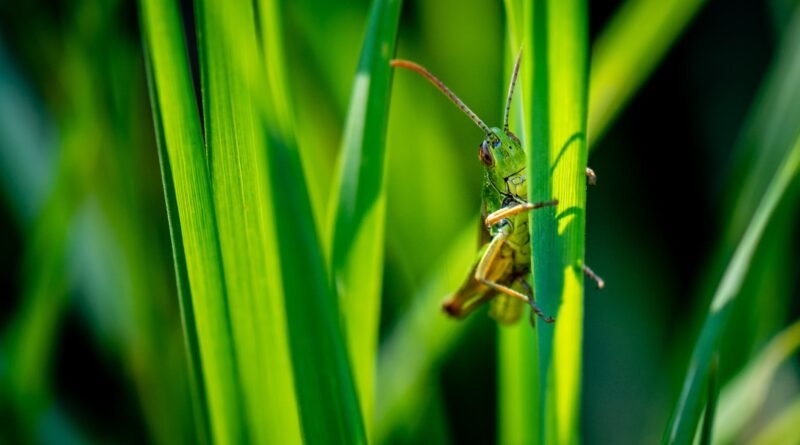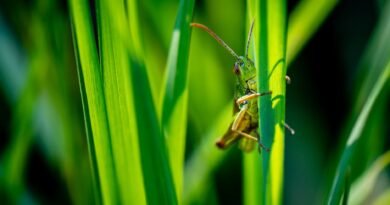Grasshopper Chronicle: 19
Grasshopper Chronicle 19
Cotton versus Carmichael
Jyotirmoy Prodhani
‘1951 or 1971, in any case Bhojohari Dey, Radha Ballabh Saha, Kalipada Dutta and so many of them will have to go. Where will they go?’ said, Jaydeep.
Radha Ballabh Saha were one of the oldest families of Golakganj; their ancestors came to settle in Golakganj sometime in 1951 or so, after Partition. For them it was not so much of a problem, they just crossed the river and were here. They were a big family in Rangpur district, which suddenly became part of East Bengal. They had land and also a business. But they did not cross over to India because there were communal clashes, but because, business-wise it made sense to be at Golakganj than at Bhurungamari in Rangpur. Somehow, they thought that independent India would prosper more than East Pakistan, besides they also apprehended that ultimately everything would be occupied by the Muslims from West Pakistan. They chose Golakganj because they were already familiar with the place, they had business dealings with several people in this place and more importantly, they spoke the same language—Rangpuria. Though Radha Ballabh Sahas were Bengali, they could not speak the language, they could speak only the Rangpuria language which was the same as the local language of Goalpara district. Coming to Golakganj, the Sahas had become quite well-known as one of the richest business families at Golakganj. They opened one grocery shop in the bazar, which turned out to be the biggest grocery shop at Golakganj. There one could get almost everything. Then they started a strange business—the distribution of subsidized kerosene oil. In fact, we heard that the officers from the DC office at Dhubri were looking for a person who would take the responsibility to distribute subsidized kerosene oil through retail hawkers. With 70 paisa per litre of kerosene, most of them found it hardly lucrative. No businessman was willing to take the dealership of kerosene. Other local people did not have a clue that the government was to appoint some private dealer to distribute kerosene oil. Radha Ballabh Saha was too keen to get the kerosene dealership. People looked down upon him to see his enthusiasm for a dealership of kerosene. Nevertheless, he got the kerosene dealership and engaged more than a dozen of people to be his hawkers who would sell kerosene in the villages by taking kerosene drums on tricycles, called kerosene hally.
Radha Ballabh Saha became one of the richest businessmen of Golakganj, not because of the big grocery shop but because of the kerosene dealership. He was the only one supplying kerosene to the entire Golakganj constituency, which was a very big area. The ones who had earlier rejected the idea to be a kerosene dealer were biting the back of their hands for not accepting the offer that came way.
Bhaja Hari Dey was not as rich. His forefathers also came from East Pakistan after Partition. They were originally from a place called Lalmanirhaat. Bhaja Hari’s father often used to come to the places like Coochbehar, Toofanganj, now in West Bengal and also to the places like Golakganj, Dhubri, Goalpara in Assam. He used to sell various kinds of things in those places and eventually made a good relationship with the traders there. In fact, before Partition, it was even unthinkable that all of a sudden this part of the country would become a foreign land and his own place would be a new country and no longer remain India. Soon after the Partition, they were clueless as to what they should do. But his neighbour, one by one, left their hearth which became East Pakistan. For Bhaja Hari’s father, it was a very, very difficult decision to make to leave his native village. Finally, they decided to cross over and come to Golakganj. There were two reasons to come to Golakganj. Firstly, Golakganj was quite near to his place in Rongpur, and so if there was some unification between India and East Pakistan someday, it would be easy for him to go back to his ancestral home at Lalmonirhaat. And secondly, Golakganj was the only place where he had some very close friends. At a new place, he thought, what mattered most was not money and resources but people who would be there at the time of any crisis.
Kamini Roy who was the headmaster of Jogomohan Vidyapith was from Bogura in present Bangladesh. He had relatives in various parts of Assam. He studied in Bogura and then came to Guwahati to do his graduation from Cotton College. Those days students from this region had the dream of studying either at Cotton College in Guwahati or at Carmichael College in Rongpur. When many students from Dhubri, Goalpara, Gauripur preferred Carmichael College, many from Bogura, Rajshahi and also Rangpur preferred Cotton on the other hand. Had there been no Partition, many from Assam might still have studied at Carmichael College.
Which college was better, Carmichael or Cotton?
- ‘Do you know many from Assam who studied in Carmichael College and they have become great people? Cotton College was established in 1901 and Carmichael was established in 1916, even before Dhaka University. However, in terms of reputation, both Cotton and Carmichael are equal. I heard Carmichael had a very impressive building, like a palace’, said Golap sir one day.
But unfortunately, the college has gone to Bangladesh. Manoj quipped, ‘It is good that the college is in Bangladesh now. If we study there, it would be studying in a foreign country now.’
Golap sir further informed, ‘Dr Aniruddha Choudhury from Dhubri, a big leader of Gana Sangram Parishad studied at Carmichael College. Have you heard the name of the famous writer Revati Mohan Dutta Choudhury, Sheelabhadra? He is originally from our Gauripur, he also graduated from Carmichael College. There are many from this side who used to study in Carmichael College, because Rangpur is very near but it has become so far because we have become two separate countries now.’
He continued, ‘Do you know what is the local language of Rangpur?’
Alok replied quickly, ‘Bengali’
- ‘No, it is not Bengali, it is called Rangpuria same as Goalparia. They speak the same language, they sing same song as our Pratima Barua Pandey sings. Once you grow up you must go and visit Rangpur and Carmichael College.’
- ‘Sir how far is Rangpur from here?’
- ‘It used to be three to four hours by road, just a little more than a hundred kilometers. But now of course roads are different. But all of you should study hard to study at Cotton College, this is the first college in Assam. You know which is even older than Cotton College in this region?’
Everybody was blankly looking at him. He said, ‘It is Victoria College of Coochbehar which was established by the king of Coochbehar in 1888. In fact, Dhaka University is older than Gauhati University, it was established in 1921, and our Gauhati University in 1948’
Sir knew so much about colleges and universities. About Bangladesh we had vague ideas. We thought there was hardly any college or university worth a name in that country, else why would so many people migrate to Assam that we had to carry out a great andolan against them? That many from here studied in present Bangladesh was news to us. Had it been the same country, where would we have studied?
Maybe, some of us would have gone to Guwahati and some to Dhaka and Rangpur. Some in Cotton and some in Carmichael.

Jyotirmoy Prodhani
Professor, Dept of EnglishNEHU, Shillong




